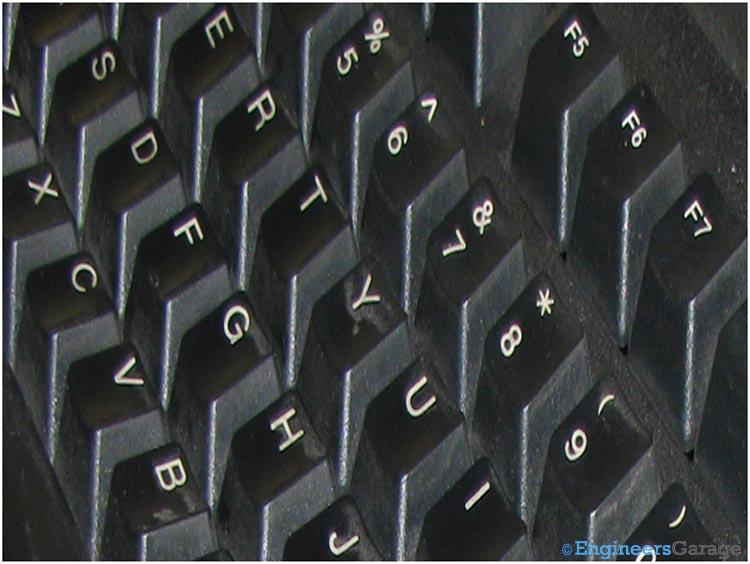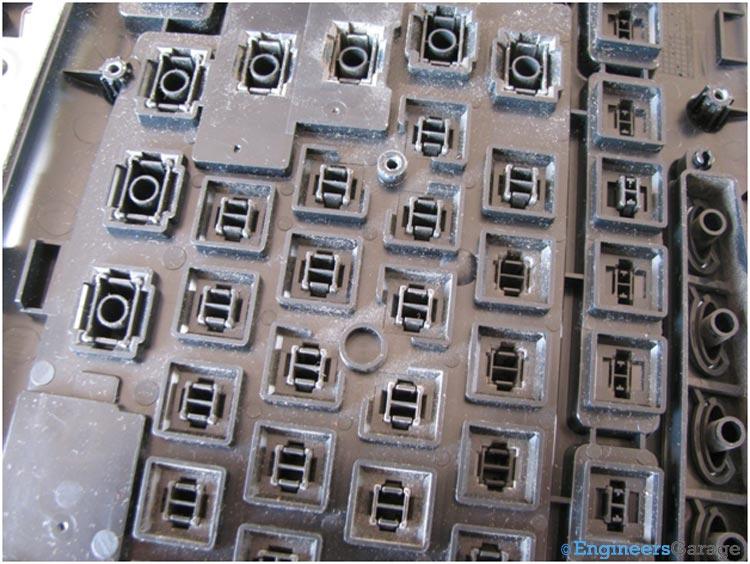 |
Thursday
2024-04-25
11:33 PM |
| CHAT |  |
| Statistics |
Total online: 1 Guests: 1 Users: 0 |
| Calendar | | « April 2024 » | | Su | Mo | Tu | We | Th | Fr | Sa | | | 1 | 2 | 3 | 4 | 5 | 6 | | 7 | 8 | 9 | 10 | 11 | 12 | 13 | | 14 | 15 | 16 | 17 | 18 | 19 | 20 | | 21 | 22 | 23 | 24 | 25 | 26 | 27 | | 28 | 29 | 30 |
|
| VISITORS | | A HEARTY WELCOME TO MA VISITORS 4R ENTERIN MA BLOG
THNX 4R VISITIN MA BLOG |
|
|
Welcome Guest | RSS
Main | Registration | Login |
| STUDENTS QUEST |
Main » Entries archive
How I Think Posting HTML In Comments Should Workby: Chris Coyier People post a good bit of HTML in the comments of articles on this site. They are trying to demonstrate something, ask for troubleshooting help, show alternate techniques, etc. This is excellent. I want to encourage this as much as possible. Unfortunately people are often confused on how to do it correctly and get frustrated when it comes out wrong. I have to post instructions in the comment area to teach people the best way for this site: - You can use basic HTML
- When posting code, please turn all < characters into <
- If the code is multi-line, use <pre><code></code></pre>
Ideally I'd like to get rid of all of those instructions completely, and have everything "just work". Here are two changes that would get pretty close to ideal for comments on this site: 1. Any HTML that isn't one of the "allowed tags" gets escaped.WordPress has this default set of allowed tags: <a href="" title="">
<abbr title="">
<acronym title="">
<b>
<blockquote cite="">
<cite>
<code>
<del datetime="">
<em>
<i>
<q cite="">
<strike>
<strong>
If someone uses these tags in a comment, they will apply to that text and render appropriately. If they use any other tag, it should escape, not be stripped or inappropriately render. So: 
I'd also say that if it's a single line of code as in this example (does not contain line breaks) it should wrap the newly escaped code in <code></code> tags. Also, if the code is already escaped like <span> then leave it alone. |
Subject - World's Youngest CEO PROFILE OF SUHAS GOPINATH, CEO & PRESIDENT, GLOBALS INC.
-World's Youngest CEO
Mr. Suhas Gopinath, now aged 20, a resident of Bangalore had a passion for information. A passion so energetic, that it drove Suhas to setup a multi national company christened Globals Incorporated. He hails from a middle class family, where his father Mr. M R Gopinath was a defence scientist.
At the age of 14 he was recognized as the world's youngest web-developer through his project coolhindustan.com. A fortune 500 company, being amazed at the talent, offered him a job which included a $2000 paycheck per week, a chauffer driven car and an executive apartment.
All this did not lure Mr. Gopinath as he was mentally strong of what he wanted in his life. To encourage the youth, he setup Globals Inc, in the year 2000 at San Jose, California as the laws in India did not allow him to setup a company in the country as he was still minor.
From then Globals Inc has drastically grown as a Multinational company with offices in more than 11 countries which includes USA, UK, Germany, Russia, Italy, Spain, Australia, India, Bangladesh, etc which
offers tailor made solutions in the fields of web, mobile, networking, e-commerce and software solutions. Mr. Suhas Gopinath at the age of 16 was recognized as the world's youngest entrepreneur in by CNBC and e-Business, Canada.
With this at the age of 17 he was recognized as the "World's Youngest CEO" by leading Medias across the globe including BBC, CBS News, Washington Times, IndianExpress, Streats-Singapore, Times of India, NDTV, The Age – Australia, etc.
Though his age sounds exciting for a humungous title like CEO, it was also against him. In the year 2003, a Singapore based company approached Globals Inc to outsource their projects worth $38,000. The law stated that an executive signatory must be above 18. This cost him the deal. Nevertheless, he steered Globals Inc further, with sheer determination. His team has grown from a mere 4 members to a staggering 600.
Under his leadership the team has served more than 400 clients including fortune 500 companies. At the 2005 International Business Awards held at New York, he was awarded as the "Best International Business Executive" . He was also awarded Karnataka State's "Rajyotsava" Award on November 1, 2005 and was the youngest in the state's history to bag this prestigious award.
Suhas' foremost motive was to establish a platform for youth which encourages them in their chosen IT career and also to build their entrepreneurial skills. Currently, Suhas is perusing his bachelor's degree in Information Science Engineering at M.S.Ramaiah Institute of Technology, Bangalore.
Suhas Gopinath is also designated as the Indian Representative for UN Youth Federation and Action Program, and Coordinator for Indo-Pak Youth programs. Suhas Gopinath is currently the visiting faculty at IIM Ahmedabad for Start-Up Finance and Entrepreneurship, and is also the Brand ambassador at PETA along with other Hollywood and bollywood celebrities.
Globals Inc is a multi national company founded in the year 2000 by Mr. Suhas Gopinath at the age of 14 years at California, USA. Globals offers cost effective world class quality solutions in web, software, mobile and multimedia. Globals has established offices in more than 11 countries. Till date Globals has served more than 200 clients worldwide.
Just spare few minutes in visiting their website and know what a dynasty the young guy has created. He could be a real inspiration for a lot of us. |

Creating web apps and sites for the Mobile Web has its own sets of challenges and techniques. From UIs optimized for fingers instead of mouse cursors to the bandwidth limitations that most portable personal devices have, developing for mobile devices requires a paradigm shift for those of us who’ve traditionally created products aimed at desktops. To help you rapidly deploy cross-platform mobile apps and websites, there’s a wide range of JavaScript frameworks you can take advantage of.
Some common characteristics of JavaScript mobile web development frameworks: - Optimized for touchscreen devices: Fingers as input devices instead of mouse cursors provide an extra set of challenges in user interface design. Mobile web development frameworks provide standard UI elements and event-handling specifically for mobile device platforms.
- Cross-platform: Support for multiple mobile device platforms such iOS and Android allows you to get your app to a wide range of users.
- Lightweight: Because of current bandwidth limitations, a stronger emphasis on lowering file weight is placed into mobile web development frameworks.
- Uses HTML5 and CSS3 standards: Most mainstream mobile devices have web browsers that support HTML5 and CSS3, and so mobile web development frameworks take advantage of new features available in these upcoming W3C specifications for a better user experience.
In this article, you’ll find my top picks of JavaScript mobile web development frameworks you should consider using to build your next mobile web app or website. 
jQuery Mobile, a framework that will help you rapidly and confidently develop mobile app user interfaces across popular mobile device platforms like iOS and Android, is perhaps the most popular project out there. The framework boasts a lightweight code base (weighing in at 20KB when minified and gzipped) and a huge bevy of standard user interface elements that mobile device users are accustomed to, such as switches and sliders. See jQuery Mobile in action by going to its demo page (it doubles as the framework’s official documentation). If jQuery isn’t your thing, check out MooTools Mobile, a MooTools plugin by MooTools core developer Christoph Pojer and Dojo Mobile, which leverages the Dojo API to help developers rapidly build apps for mobile platforms.
...
Read more »
|
 Business Start-Up Kit Business Start-Up Kit288 pages | Aug 31 2010 |ISBN: 0793160278| PDF | 1.5 Mb
Orignal Content Provider - Heroturko.com
Entrepreneurship has many potential rewards, and also carries unique challenges. Learn what works and what doesn't, along with scores of tips and hints in an easy-to-read compendium from one of the nation's foremost authorities on small business.
download |

My previous post regarding the Communal Violence Bill was felt to have had a strong communal overtone. It is still there in public domain as I stand by what I said then. Yet I decided to take a more moderate stand to convey the information in the Bill properly.
I AM SORRY IF SENTIMENTS HAVE BEEN HURT.
So here is the moderate and a more informative version of what I intended to convey then. I have avoided using names of religions as far as possible. Well it is a nice gesture and a very important duty of the Government of india to protect the interests of minorities. Yet this bill is a mere mockery of the federal system of which we are proud part of.
...
Read more »
|
QUESTION : Why Is Earth Round???
An interesting question. Now, the first question that comes to my suspicious mind is "IS the earth round?" And the answer is no, at least not perfectly round. But it is round compared to your average cube, that is for sure! Now, my understanding of how solar systems form is pretty inadequate; all I can tell you is what I see on "Nova." But basically, I guess it has to do with gravity, which is a CENTRAL FORCE. What that means is that gravity pulls things together along a straight line, and the more massive one of the things is, the stronger it pulls. When the earth was forming, it was basically a big ball of dust left over from an exploded sun (a supernova). Gravity caused a lot of the matter to condense into a big fiery ball (our sun), but some of the dust was far enough away from the Sun so that the stronger forces were between planetary dust particles and not the sun. SO, they swirled together into a ball. You can see something similar when you make a painting with one of those "spin-art" machines; you put a card on the spinner, which whirls around real fast, and then you squirt paint on the card. The whirling causes the paint to go out away from the center (this is like the explosion of the supernova) and droplets go out along an interesting path until they stop, which happens when the spinning force is equal and opposite to the force which attaches paint to the card (this is like gravity). Now, if the force attaching paint to the card were not so strong,eventually the drops would get bigger - "planets."
|
1.Who invented the # zero.
2.Where it was invented.
3. What happened.
4.Why they invented it.
5.How they invented it.
AnswerThe number zero was invented independently in India and by the Maya. In India a decimal system was used, like ours, but they used an empty space for zero up to 3rd Century BC. This was confusing for an empty space was also used to separate numbers, and so they invented the dot for a zero. The first evidence for the use of the symbol that we now know as zero stems from the 7th century AD. The Maya invented the number zero for their calendars in the 3rd century AD. The number zero reached European civilization through
the Arabs after 800 AD. The Greek and Roman did not need the number zero for they did their calculations on an abacus. The name 'zero' comes from the Arabic language.
AnswerIt was invented by a Hindu mathematician Aryabhatta in India before 400 BC on the basis of a vedik chant as below-
पूर्णमदः पूर्णमिदं पूर्णात् पूर्णमुदच्यते।
पूर्णस्य पूर्णमादाय पूर्णमेवावशिष्यते॥
That is Absolute, This is Absolute, Absolute arises out of Absolute
If Absolute is taken away from Absolute, Absolute remains. OM Peace, Peace, Peace.
Answerthe number zero was one of the last numbers invented beacause the ancient egyptions never used them and not many other countries at the time used maths.
---- AnswerWe are so accustomed with seeing the perfect circle, the zero that we cannot imagine it had to be invented. In fact, the invention of zero was a real revolution.
In Babylon (modern Iraq), arabs had invented the "zero" during the 4th century BC. But their numbering system was not transmitted to other people because of its peculiarity: the first group (that of the units) was not made of 10, but 60 figures. That corresponded to our system of time counting: one minute has 60 seconds, one hour has 60 minutes
There were also arabs, that used the zero as we know today, between words. to make sure you understood that the space was really empty there, they put a little raised dot. Well dots are easy to miss, so to make it a little blacker, the scribe would wiggle his pen around a little, which sometimes left a little hole in the middle of a small circle.
So we see that the arabs used the function of the zero that we know today, but they did not say it was a number.
One century after the Mayans, around the year 600 AD, Hindu savants invented too the figure "zero". They also invented the position numbering. Arabs learned this figure system from India. They even called them "Indian figures". During the 10th century, these numbers (0,1,2,3,4,5,6,7,8 and 9), slightly changed, were taken over by the Europeans from the Arabs, like many other important items.
i
|
Computer keyboard is an device used to convert the keystrokes in to the electrical signals that a computer can understand. There are special types of switches and circuits to do this. When we press a key, it completes its corresponding circuit and an electrical signal goes to keyboard’s internal processor which detects the key which is pressed.
Keyboard contains its own internal processor that takes electrical signals through key strokes.
|
Every invention has a story which sizzles right behind the scenes. Ball Pen is also one invention, which though is of huge importance, yet not many know where it originated from. The history can be traced back to 1880s, when the first patent on a ball pen was issued to John Loud. This leather tanner attempted to make a writing object with which he could write on the leather he tanned. The pen, he had invented, constituted of a rotating steel ball as the tip held in a socket. It could write on the leather as intended by Loud. However, the invention proved futile for others as it proved way too coarse and messy for letter writing; so was disapproved commercially. The original patent lapsed with the failure of this invention on the grounds of practicality and usability. The second innings for the ball pen was in the making and it all began again with the first and very famous stylized fountain pen. Invented by Cross, the fountain pen is identified as daddy to the ball pens. This invention triggered more of brainstorming that lasted till ball pen was born. Laszlo Jozsef Biro, a native of Budapest owns the patent of the ball pen to his name. What he had invented was a ball pen that contained ink cartridge in the pressurized form. A journalist named Biro took no time in noticing the quick drying capability of the ink used in the newspapers, and thought that if the same ink was utilized in a pen that smudged letters problem could be resolved. Being a proof reader, Biro had to refill his fountain pen from an ink bottle incessantly and this drove him crazy at times. |
In this tutorial, we will be covering how to use Classes and Objets instead of Parallel Arrays. In order to teach students how to use arrays, many instructors give assignmentsallows students to gain confidence
when using arrays, this type of approach becomes very cumbersome to use and difficult to manage, especially as the number of elements stored increases in size and more so as the use of resizable collections like ArrayLists come into play.
So let's go ahead and start out with a standard inventory program that uses parallel arrays to store price, quantity and name. This program will display a menu using a JOptionPane window requesting input for adding inventory, updating a current item's status, displaying the inventory, and quitting. If the user wants to update an item, we will display another menu asking for the index of the item to change. After we recieve the index, we will display another menu asking the user if they want to update the name, quantity or price, followed by a prompt for the new value. And as was the requirement when I did the assignment, we'll limit the size of the arrays to 10 items in inventory.
So far, this program isn't too bad. A few tedious things (beyond getting input) that I noticed included making the display String for a given item, like at this line String item = "Name: " + name[index] + "\nQuantity: " + quantity[index] + "\nPrice: " + price[index];. Consider this though- what would happen if there were no size limitations as to the number of items you could have in inventory (meaning we are now using ArrayLists in parallel instead of static arrays)? When you go to add or remove (which would be the next logical step) items, you wouldn't have to use a counter variable because the ArrayLists would automatically resize as soon as elements are added or removed from them. This gets a little sticky, however, when removing elements in the middle of the lists, as it is very easy to get attributes mixed up. For example, you could remove element 9 for the name list, but end up removing element 8 from the quantity and element 10 from the price list. This would completely mess up the data integrity and accuracy, plus it is very hard to debug this error.
Another logical step would be to sort the elements according to one of their attributes (name, quantity or price). Using parallel arrays, you have to enforce each step of the sort amongst all three arrays. So for example, if you sort the quantity array in ascending order, the changes aren't automatically affected throughout the other two arrays. This means that if you call Arrays.sort() on one array, it doesn't necessarily change the other two. And if you call Arrays.sort() on each of the three arrays, you have just sorted three arrays individually, so your name, qunatity and price array are all in order according to the values stored in them. However, you will have mismatched all the attributes from the item they are supposed to describe.
Now that we've seen the cons of parallel arrays, let's talk about the advantages of using classes instead. First off, the attributes representing each class are contained within the class. This means that the quantity, price and name cannot get mismatched like we saw when using parallel arrays. This also means that we only have to manage one collection, so it saves memory. Next, we can use methods to make our lives easier. This means that we can set up a toString() method in the class, and when invoked, it will return a nice formatted (to our specifications) String; and we can also use a single setter method so we can eliminate the group of if statements for updating an item. So in short, you are dealing with one variable that holds all the information and can have automated tasks set up instead of having to hard code each component as we saw above.
Now that we've discussed the advantages of classes, let's take a look into puttingputting them into use. To start, we'll take a look at designing a class to model an Item. After looking at the Item class, I notice how it is a lot more organized than using parallel arrays, plus it provides a little tighter control on the attributes and more usability through many of its methods, most notably the toString() and update() methods. Now let's redo our Inventory program using the Item class instead of Parallel arrays. As we can see, this program gives us tighter control over each Item because we don't have to worry about keeping up with which indices represent each Item. This becomes increasingly important as we move onto using resizable collections like ArrayList, and as we attempt to sort the Items by a given attribute (or multiple attributes). We also have the convenience of using methods defined in the Item class, something we didn't have the luxury of doing when using parallel arrays. By using classes instead of parallel arrays, you will begin to get a better handle on Object-Oriented Programming. This will help you as you continue your studies of Java, especially as you come across more advanced OO concepts like inheritance, abstraction and polymorphism, in addition to helping you better organize your program.
|
|
|









